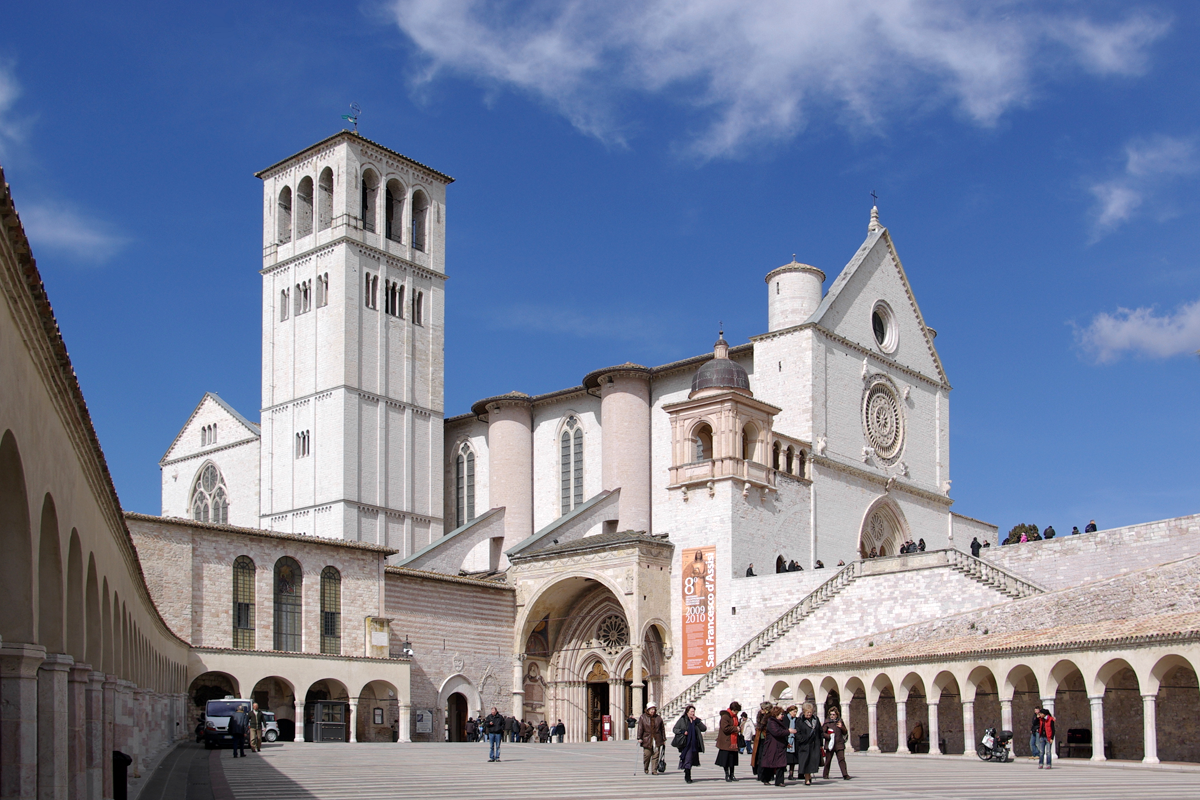The lower church was started under the supervision of friar Elia in July 1228.
The works were due to be completed in 1230 with the transfer of the body of the saint laid in a sarcophagus under the high altar, where it is currently preserved in a small crypt. The most famous artists of the time, from Giotto to Cimabue and Simone Martini, worked on the decorations of the basilica.
The lower church was intended as a sepulchral church, as also highlighted by the presence of the crypt. It still has an almost Romanesque appearance: no elevation, large crossings, ribs with a square cross-section, low and large pilasters to support the heavy weight of the upper church. However, the transition of the Gothic period is clearly shown by the large gap between the ribs and the webs, which further highlights the framework compared to Romanesque art.
Papal Basilica of St. Francis in Assisi
The Basilica of St. Francis in Assisi is the place that, since 1230, has retained and preserved the mortal remains of the seraphic saint. Requested by Pope Gregory IX as a specialis ecclesia (Latin for ‘special church’, it was bestowed by the Pope himself with the title of Caput et Mater of the Minorite Order and at the same time given to the friars themselves for perpetuity.
In the complex history that punctuated the evolution of the Order, the basilica (and annexed Sacro Convento) has always been looked after by the so-called “Friars of the Community”, the group that would then form the Order of the Friars Minor Conventual.
In 1754, Benedict XIV promoted it to Patriarchal Basilica (now “Papal”) and papal Chapel. In 2000, together with the other local Franciscan sites, the basilica became a UNESCO World Heritage Site.
According to tradition, Francis himself indicated the place where he wanted to be buried. This is the lower hill of the town, where the “outlaws”, the convicts were usually buried (maybe this is also why it was called ‘Collis inferni’). That hill, donated by Simone di Pucciarello, was renamed ‘Collis paradisi’ and this is where the new basilica was erected, on the north-west side of the walled town.
The basilica consists of two churches, one on top of the other, and connected by two different building stages: the first one associated with Umbrian Romanesque art from Lombardy, while the second has a French origin. In both bases, the decorations inside are extraordinary.

